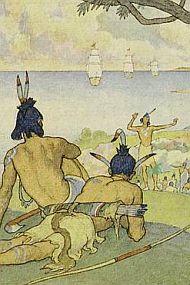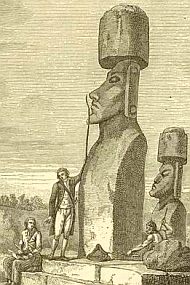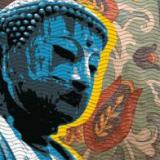
brainstorming n. intensive discussion to solve problems or generate ideas
That’s what my dictionary says, and it is absolutely right. Brainstorming is always a discussion, but what gets most people confused is that they often need to generate ideas on their own, without the benefit of discussion with another human being. Creative pursuits can be very solitary activities. In fact, they often have to be for best results, especially in the early stages. So how do you generate ideas and discuss these ideas with yourself? In case you are convinced that your creativity requires a healthy helping of multiple personality disorder to survive, fear not, because there are healthier ways to light those creative sparks. One method I always like to use when brainstorming for new ideas is flipping through a dictionary.
To most people a dictionary is a dry and boring book. It has a lot of interesting words in it, but no gripping plot or characters to speak of. How can you possibly be inspired to create by such a regimental piece of literature? To answer that question, here a few dictionary techniques I use when I am looking for solution to a creative problem:
- Seek Knowledge
- Divide and Rule
- Be A Good Neighbour
- Take A Leap Of Faith
- Respect History
- Take Action
If all that sounded mysterious and cryptic, lets move on to the specifics of each of these techniques. To help make things clearer, let me take on the hypothetical challenge of braistorming for an image or illustration idea for the word brainstorm. Using these very techniques that I am about to describe, lets see what ideas we can come up with.
1] Seek Knowledge
 While we all start with the metaphorical blank slate, there are always things we do know to begin with, no matter how minuscule. Let them be your starting point on your path of knowledge.
While we all start with the metaphorical blank slate, there are always things we do know to begin with, no matter how minuscule. Let them be your starting point on your path of knowledge.
What I know to begin with in my example is the theme: brainstorming. The path of knowledge when using a dictionary to brainstorm is to find out and research what you know. The best place to start would be the listing for the term brainstorming which is reproduced at the beginning of this article.
It would also be natural to read up on brainstorm which appears just above it in the dictionary. There I find mention of “severe outburst of excitement” and also the fact that it is another word for brain wave. So like all good seekers of knowledge I go where my travels lead me, and the good dictionary tells me that a brain wave is “any of the fluctuations of electrical potential in the brain as represented on an electroencephalogram.” Electroencephalogram (EEG) leads to the idea of tracings of brain waves using electrodes placed on the scalp. Suddenly I have a great collection of images to work with: excited outbursts, electrodes, and EEG tracings on graph paper. Put some or all of those elements together and you have your first solid idea for a visual representation of brainstorming!
2] Divide and Rule
 Every beast has it’s mechanism, and every mechanism has it’s parts.
Every beast has it’s mechanism, and every mechanism has it’s parts.
Words and concepts are often built of component words and concepts. While they might be equal to more than the sum of their parts, understanding their parts will certainly not hamper your quest to better fathom the beast you wish to conquer. It might help you understand where and how its various tentacles coil.
Brainstorming = brain + storm
We often assume we know what simple words like brain and storm mean and say, but a quick look at the different connotations and interpretations of everyday words such as these can often be educational to even the most literary amongst us.
For example, I never knew the fact that one of the meanings of brain was “to smash the skull of”. Also, reading up on storm shook me out of the tendency to only think of the noun form of the word. To Storm can have a different connotation that could prove interesting. How about giant brains storming a castle? And if I wanted to get really heavy metal with this, lightning bolts could be cracking skulls. The combinations are endless.
3] Be A Good Neighbour
 Always know who your neighbours are. You might be in for some entertaining surprises.
Always know who your neighbours are. You might be in for some entertaining surprises.
When looking through a dictionary, always let your eyes wander to words that appear around, before and after the words you are actually reading up on. Variations like brain storm and brain wave are the more obvious finds using this technique, but sometimes it can lead to more unexpected results.
When using this trick on our example, my eyes wandered to the term storm trooper much further down the page from storm. That supplies a whole new set of images to associate with brain for our final imagery, even if you’re not a Star Wars fan. On a more tangential note, I looked at the word brake light that appeared on the same page as brain and that led me to cars and traffic and traffic signals, and the fact that brainstorming is sort of like a green signal for ideas to flow through. That can lead to great range of traffic metaphor images to apply to the notion of ideas and brainstorming.
4] Take A Leap Of Faith
 Chaos theory wasn’t just invented for butterflies. Take a chance. Make a leap of faith.
Chaos theory wasn’t just invented for butterflies. Take a chance. Make a leap of faith.
Open your dictionary to a random page, point your finger to a random entry and see where it leads you in your search for ideas. While this might seem like a very desperate method, chance collisions of the right ideas can sometimes lead to stunning results. Obviously, being a random method, your results are not going to be stellar on every roll of the dice, but you need to keep trying till something sticks and makes sense.
In my experiment with trying to find the star crossed words for brainstorming I came across these surprise candidates: overgrow, profound, riddance, get away, condescending, bagman, identification, fairy ring, mouldy. I thought this was a good start to play with so I stopped at that point.
Now look over your found terms and see how they relate to our main theme of brainstorming, a sort of free-association between two concepts. Some of the words seem to have no immediate relation to brainstorming, such as bagman and identification. But others have potential, like riddance. Isn’t brainstorming a sort of riddance of limits and shackles on your mind? A brain rid of its shackles, that’s a pretty good image. Or maybe there’s a brainstorming fairy that zaps us with new ideas. You see, two new image ideas already from a short session of random selection. Don’t underestimate the usefulness of the chance encounter.
5] Respect History
 Everything came from somewhere. And where it came from dictates where you could take it.
Everything came from somewhere. And where it came from dictates where you could take it.
Every word has a history and one of the most useful pieces of information you can glean from a dictionary is the etymology of words, how they developed into their present form and where they came from.
In my experiment I found out that brain ultimately evolved from the Greek word brekhmos for forehead. It would seem storm came from the German sturm, which is related to the old German stürn, which means to poke or stir. Strangely enough, this gave me a new perspective on what brainstorming means. After the hundreds of years of evolution of these words, brainstorming still means to “stir” up your mind to produce new ideas, or to “poke” it and see how it responds. Now you have new imagery of poking brains and stirring foreheads to play with. And you thought history was boring.
6] Take Action
 Thinking without doing is really very tiring. Perhaps you need a break.
Thinking without doing is really very tiring. Perhaps you need a break.
I presented these brainstorming techniques as separate entities because they are easier to understand and absorb in this way. However, in real world usage, I rarely think of them in isolation. Once you imbibe the spirit of these, you will learn to mix and match these tricks into your own personal method of extracting new concepts from the recesses of your mind, with the dictionary as guide.
I have shown you how to use these techniques, which can be adapted to generate ideas on any given theme or topic. But just using these will not give you the full release of your mental flood gates that is essential to any fruitful brainstorming session. This last aspect of action needs to be woven into the entire process and combination of processes described above. What I mean by this is that you need to be active and reacting to the new words and information you read or you will never gain the full effect of any revelations.
As you use these tricks to navigate the dictionary into new and uncharted depths and alley ways, make sure you are always taking notes, recording notions, or scribbling doodles. These seemingly simple actions take your thinking to the next level because they force you to actively consider and measure new concepts rather than to sit back and passively absorb them as dead facts.
Idea generation is an active mental process and part of the trick to keeping yourself mentally active is to force some physical activity into the mix. Scribbling and note-taking can make you think of the ideas you find, and they can help you find new associations that you might not put together without the physical act.
So the next time you need some new ideas, try your friendly dictionary on for size. You will realise that it is not as dry and boring as you thought it was. On the contrary, it contains a whole universe of strange and beautiful concepts just waiting to be discovered. Your only labour is to find them.
Liked this article? Please share it: ![]()
![]()
![]()
![]()
![]()
![]()



Reading through this post, made me realize the parallel between how words can be studies and how illustrations/artwork can be explored.
I look out of something random, and then break it down to pieces, study it, study the objects usually associated with it, study how other veterans of art have approached it and then try and develop my own process for it.
Goosebumps. 😛
Thanks for dropping by Vyoma, and glad you liked the article.
Since I’m both a writer and a visual artist, I guess it is a subconscious tendency to find the common ground in thinking. At the end of the day both the words and images represent ideas, and this article is meant to discuss one aspect of the mental mechanics behind the development of ideas. So the overlapping of techniques and thought proccesses is natural.
I always feel it’s a good idea for fields of interest such as art and writing to exchange techniques because it gives the practitioners of each a new perspective on their own craft.
Once again thanks for the insightful comment, and hope to see here more often.
“My world is just as big as my vocabulary” – Anonymous
Nice Illustration.
A very appropriate quotation, and one with a great deal of depth and truth to it.
Glad you liked the illustrations, but I can only claim a slight talent of choice. I stand on the shoulders of many giants.